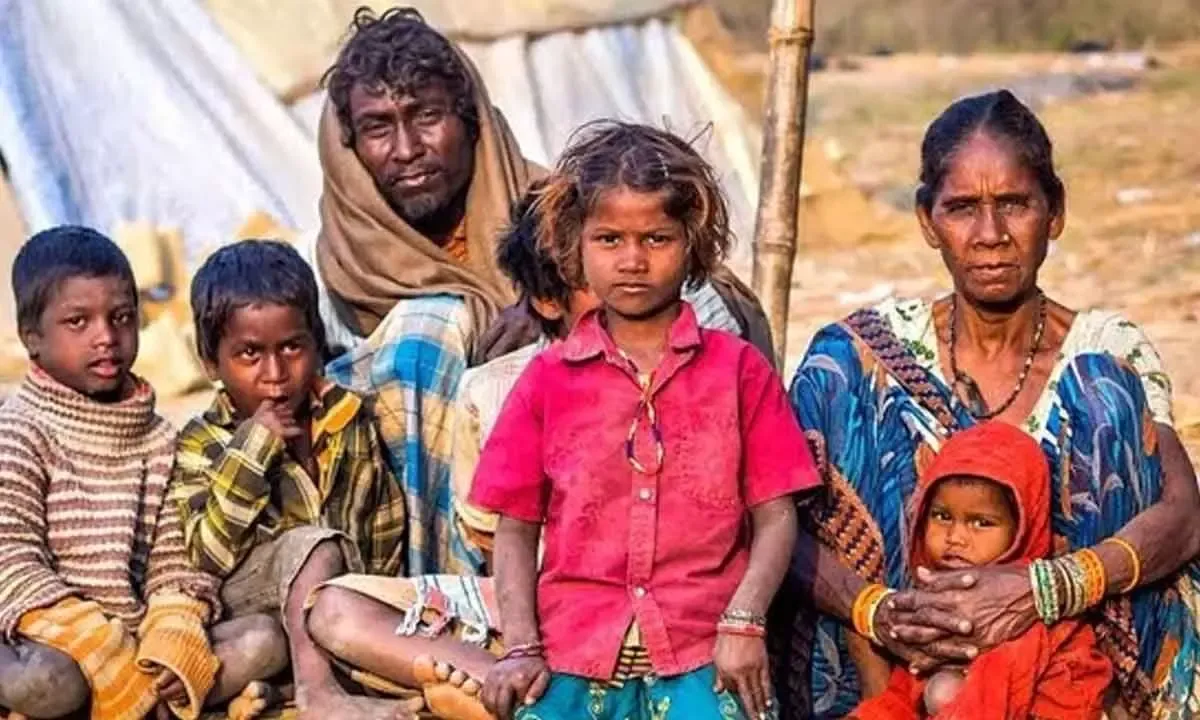‘A quiet revolution: providing a safety net for 94 crore people’
This 45-percentage point jump over ten years marks one of the most significant expansions globally

Representational Image
NEW DELHI: India has recorded a phenomenal expansion of social security coverage from 19 per cent in 2015 to 64.3 per cent in 2025. In other terms, it means that 64.3 per cent of India’s population, about 94.3 crore are now covered under at least one social protection benefit. This increase has also been acknowledged by International Labour Organisation’s (ILO) on its ILOSTAT database. This 45-percentage point jump over ten years marks one of the most significant expansions globally. In terms of number of beneficiaries, India now ranks second in the world after China, in providing social protection to citizens, according to a government statement here. As per ILO, social security is the protection that a society provides to individuals and families to ensure access to health care and to guarantee income security. It is especially important in times of old age, sickness, unemployment, disability, maternity, work injury or the loss of a breadwinner. Defined in ILO conventions and UN instruments, social security is recognised as a basic human right India has a wide-ranging social security system comprising of social insurance and social assistance schemes both at Central and state levels. These include welfare payments, mandatory social insurance with contributions from employer and employee, and other employer-based benefits. In addition to these, there are also schemes providing in kind benefits like food, health, shelter security etc. The statement said that the Ministry of Labour and Employment is working closely with ILO for a national social protection data pooling exercise to obtain a holistic picture of social protection coverage in India.
Under this project, encrypted AADHAR is being used as a unique identifier across 34 major Central schemes such as MGNREGA, EPFO, ESIC, APY, and PM-POSHAN, to identify unique beneficiaries. Phase I of this pooling exercise started in March this year and includes 10 states -- Uttar Pradesh, Rajasthan, Maharashtra, Madhya Pradesh, Tamil Nadu, Odisha, Andhra Pradesh, Telangana, Karnataka, and Gujarat. This data pooling exercise will not only strengthen India’s global reputation as a social protection pioneer but also facilitate the Central Government, States and UTs to optimise welfare spending and move closer towards sustainable financing of social protection. It will help the States in identifying unique beneficiaries under state-specific social protection schemes. With Phase II and further consolidation underway, it is expected that India’s total social protection coverage will soon surpass the 100-crore mark upon verification of additional schemes by the ILO. This massive expansion in social security coverage can be seen as a result of the pro-poor and labour welfare schemes undertaken by the Modi Government over the past 11 years, and its focus on creating an inclusive and rights-based social protection ecosystem.
India has more than 50 crore workers, with almost 90 per cent in the unorganised sector. The social security ecosystem in the country was riddled with legislations, and there was no social security available to the workers in the unorganised sector. To address these issues, the government took the initiative to simplify laws and bring the unorganised sector under the ambit of social security protection. Twenty-nine labour laws have now been codified into 4 Labour Codes – The Wage Code with amalgamation of 4 laws for ensuring workers’ right to minimum wages, Social Security Code, 2020 with amalgamation of 9 laws to ensure social security protection for all workers including those of unorganised sector, The Occupational Safety, Health and Working Conditions Code with amalgamation of 13 laws(of 2020) to provide right of security to workers in all situations and Industrial Relations Code with amalgamation of 3 labour laws for safeguarding interests of Trade unions as well as workers. To ensure security for all workers, the Central government has amalgamated 9 Labour Laws into the Social Security Code in order to secure the right of workers for insurance, pension, gratuity, maternity benefit etc. The code calls for creation of a comprehensive legal framework for Social Security. Under this, a system would be institutionalised for the contributions received from employer and worker. The government can fund the contribution of workers from disadvantaged sections. In its initiative to build digital and financial foundations, the government had launched Jan Dhan Yojana and as of June 18, 2025 over 55.64 crore people hold Jan Dhan accounts, giving them direct access to government benefits and formal banking services. The Aadhaar programme has helped create a unique digital identity system. As of June 27, 2025, over 142 crore Aadhaar cards have been issued. Under the Direct Benefit Transfer (DBT) system welfare payments have helped reduce leakages and delays. Cumulative savings have reached Rs 3.48 lakh crore as of March 2023, reflecting its efficiency and scale. By 2025, 5G services have reached 99.6 per cent of the country’s districts. With nearly three lakh base stations added in 2023–24 alone, digital services have become faster and more accessible. The fall in data costs from Rs 308 per GB in 2014 to Rs. 9.34 in 2022 has made digital inclusion affordable for the masses.



